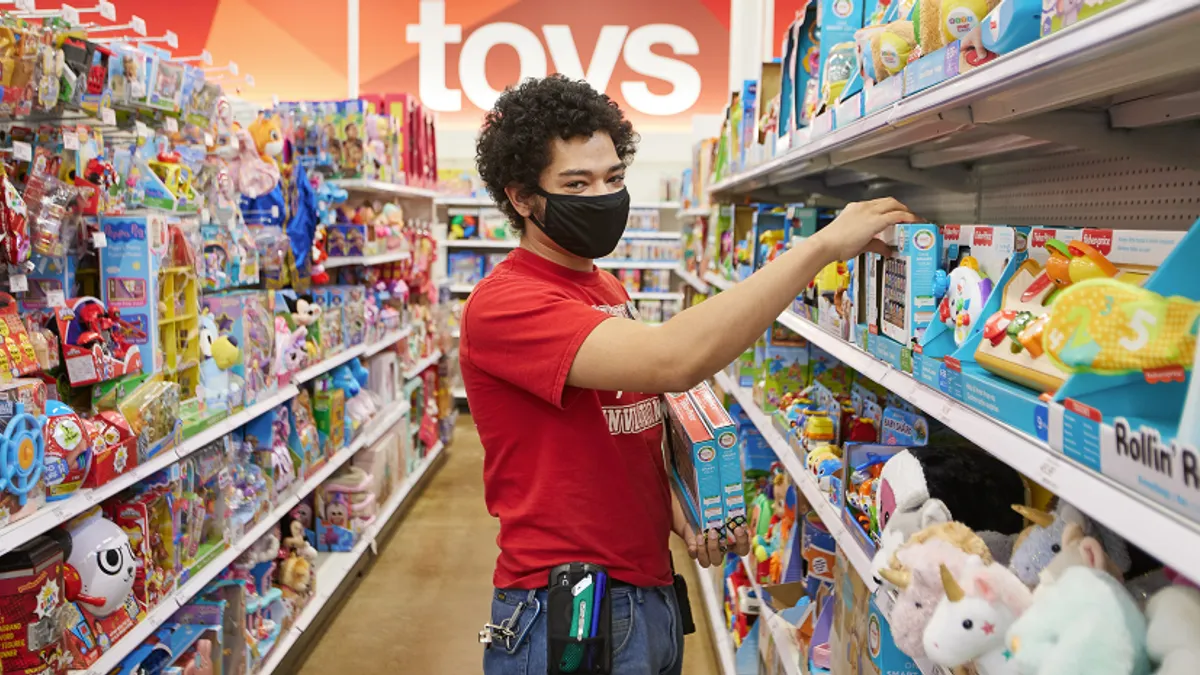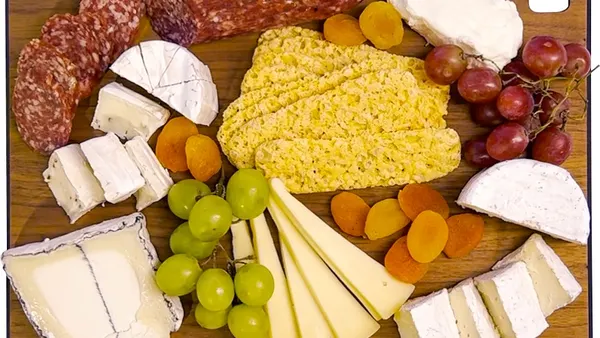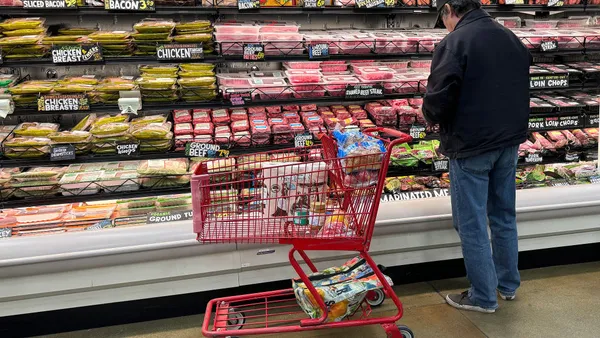Dive Brief:
- Target reported sales growth throughout its business during the second quarter of 2021, including an 8.9% increase in comparable sales on top of last year's best-ever growth.
- Thanks to shoppers crowding stores while still embracing digital channels, Target's comp sales growth was entirely fueled by traffic, the retailer said Wednesday. Store comp sales rose 8.7% and digital comp sales, which shot up by 195% last year, rose 10%.
- Target saw "double-digit" growth in fresh category sales in Q2 as it increased the number of products available for pickup, Christina Hennington, Target's executive vice president and chief growth officer, said during the company's earnings call on Wednesday.
Dive Insight:
During their call with investors and analysts, Target executives repeatedly emphasized this year's theme of "growth on top of growth" in the company's financial results.
Though Target's growth has now begun to dial down to single digits since last year's pandemic-driven results, the company still reported total revenue growth of 9.5% to $25.2 billion this quarter. Operating income rose 7.2% year-over-year to $2.5 billion.
Target's food and beverage sales grew in the "low double digits" in the second quarter on a year-over-year basis, Hennington said during the call. Top-performing departments included bakery, cafe and deli — all three of which were closed during part of Q2 in 2020 and saw sales rise by more than 50% during the company's latest quarter, Hennington said.
Following the second quarter report, the company raised its fiscal 2021 guidance. Target expects comp sales to show high single-digit growth — close to the higher end of its last estimate. The retailer also expects its operating income margin rate this fiscal year will be 8% or more.
"Guests have emerged from a year in which digital was the primary growth driver. And they're now returning to our stores in droves," Brian Cornell, chairman and CEO of Target, said during the call. "Traffic accounted for more than 100% of our second quarter growth. In contrast to a year ago, when guests were living out of their home, and the bulk of our growth is coming from bigger transactions."
Digital sales this quarter were led by same-day services (Order Pickup, Drive Up and Shipt), which rose a modest 55% in contrast to its 270% growth in 2020.
"Online remains a meaningful bright spot, with 10 percent growth on top of Q2 2020's almost 200% growth, and Shipt remains a powerful asset in this capability," Moody's Vice President Charlie O'Shea said in emailed comments.
In recent years, Target has been using partnerships and private labels to gain market share in certain categories. For instance, its most recent private label, Kindfull, focuses on cat and dog food as the pet category skyrocketed during the pandemic. Premium beauty products are now available in stores this month through Ulta at Target, a long-term partnership Hennington described as "a major win for both companies."
The retailer's food-focused private labels increased penetration by about seven-tenths of a percentage point, Hennington said, adding that the snack-oriented Favorite Day line, which Target launched earlier this year, has so far turned in "encouraging results."
"As you know, owned brands are a huge part of our strategic imperative and desire to continue to differentiate in the market [and] bring great quality products to our guests," Hennington said during the call. "And so, our commitment is to continue to accelerate our owned brands at a faster rate than our base, and that is exactly what we saw in the second quarter."
Neil Saunders, managing director of GlobalData, said in emailed comments that one of Target's challenges is to find ways to continue growing its revenue. Saunders also said that while Target has reaped rewards from the pandemic, the company managed to hold on to much of its gains and secured a higher share of its new and existing customers' spending dollars.
"Target's success isn't complicated to understand. It is underpinned by a very compelling assortment — with a strong range of own brands accompanied by exclusive partnerships with innovative direct-to-consumer labels," Saunders said. "This is supported by a modern store environment which is both engaging and fun to shop, and a very strong omnichannel operation which maximizes convenience for the customer. As much as these are fundamental retail skills, they are ones that too many retailers have forgotten."











